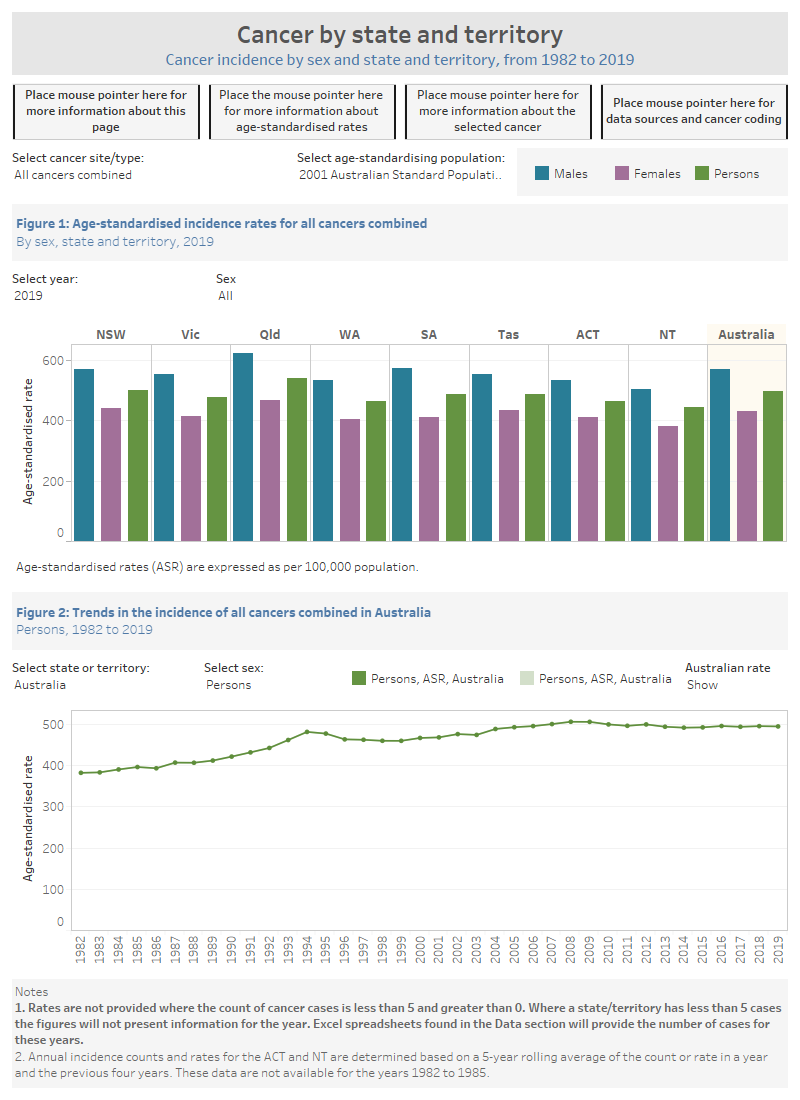Cancer by state and territory data visualisation
For many different cancers, this data visualisation provides cancer incidence data for each state and territory. Cancer mortality data are excluded from this visualisation this year but are expected to be included after cancer mortality data investigations are complete.
Help with terms, and information about the data, is available by placing the mouse pointer over the icons found near the top of the page.
This cancer incidence by state and territory visualisation contains two figures. The visualisation presents statistics for the selected cancer and provides statistics by sex..
Figure 1 is a column graph that contains information on the number of cases diagnosed and the age-standardised rates of diagnosis from the selected cancer by sex for each state and territory and Australia for a selected year from 1982 to the most recent year available for reporting at the time of release.
Figure 2 is a line graph that contains information the number of cases diagnosed and the age-standardised rates of diagnosis from the selected cancer for a selected sex and state or territory from 1982 to the most recent year available for reporting at the time of release.
The visualisation includes information about many different cancers and the statistics within this visualisation are available in Excel format within the Data section of this report.

State and territory incidence data are available as supplementary tables.


